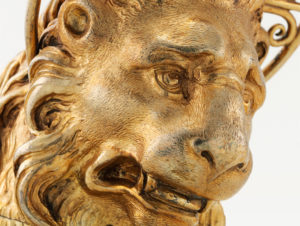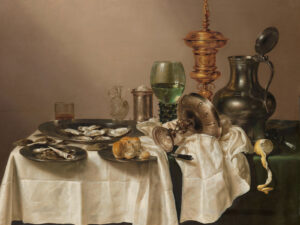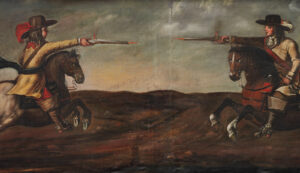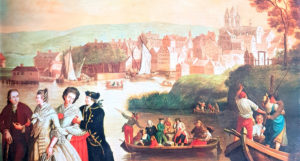
The winged lion of Zurich
The lion of St Mark was the symbol of the Venetian Republic. But Zurich also has a lion of St Mark. It dates from the 17th century and is contemporary witness to a bygone alliance of cities.
Zurich – Bern – Venice. What sounds like an Interrail route was already a known grouping as early as the 17th century. However, it was not as a journey, but as a coalition: in 1615, these three cities entered into an alliance. For the Venetians, the main purpose was to secure the direct trade routes to the north and to France. Those routes were threatened by the presence of the Spanish in northern Italy. The agreement gave Venice the right to recruit one regiment from Zurich and one from Bern if necessary. Since the late Middle Ages, Swiss soldiers had been regarded as fearsome fighters on the battlefields of Europe, and were highly sought-after. In return, the two Swiss cities secured for themselves trade freedoms, from which the Zurich textile industry in particular benefitted.
For Venice, the fact that the city was able to enter into an alliance with Zurich and Bern is largely thanks to Giovanni Battista Padavino. Years earlier, the Republic’s envoy had spent a long period of time in the city on the banks of the Limmat, and was very familiar with the ways of the people of Zurich. At numerous dinners with prominent Zurich personages, Padavino had also made the acquaintance of the prestigious gilt silver, which was used at formal dinners in those days. This type of table decoration had clearly impressed him, because he decided to gift the City of Zurich a winged lion of St Mark made of gilded silver. The lion figure is hollow. Its head can be removed and used as a drinking vessel. The lion was made by sculptor Ulrich Oeri, who created the wax model in accordance with the Venetians’ specifications, and goldsmith Diethelm Holzhalb. The latter was responsible for producing the figure in silver. The gift was formally presented in 1608 – and who knows, perhaps it was precisely then that Zurich’s fascination with the lion as a heraldic animal and symbol began…

Simply Zurich
The City and Canton of Zurich have a long and chequered history. This will be showcased in a permanent exhibition at the National Museum. From the model of a pile dwelling hut to the muesli grater and the flag of a youth movement, the show puts Zurich's rich past in the spotlight and brings an added dimension to the numerous historical objects with cinematic installations and state-of-the-art technology giving visitors a multimedia experience.



